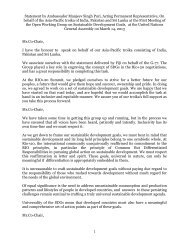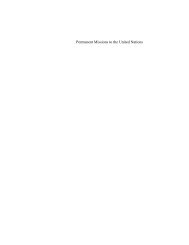STATE OF THE WORLD'S CITIES 2012/2013 Prosperity
STATE OF THE WORLD'S CITIES 2012/2013 Prosperity
STATE OF THE WORLD'S CITIES 2012/2013 Prosperity
Create successful ePaper yourself
Turn your PDF publications into a flip-book with our unique Google optimized e-Paper software.
State of the World’s Cities <strong>2012</strong>/<strong>2013</strong><br />
use of public transport in combination with non-motorized<br />
modes and proper sidewalks. An integrated urban transport<br />
strategy generates immediate effects on productivity, including<br />
reductions in travel times. Improved transport systems come<br />
with environmental benefits such as better air quality due to<br />
reduced exhaust fumes. Accessibility for all potential users is<br />
essential to ensure equal mobility opportunities.<br />
Plan infill development and guided expansion: Urban<br />
planning must combine both of these for the sake of proper<br />
density and provision of affordable urban land. Infill<br />
development can revitalize dilapidated areas in the city. In<br />
those developing countries where urbanization continues<br />
apace, new areas must be developed for the benefit of<br />
newcomers if further slum expansion is to be avoided.<br />
Properly planned spatial patterns can reduce pressure on<br />
land, provide for urban services and alleviate the burden<br />
over existing infrastructure. In addition, forward-looking<br />
planning can put a halt to land speculation while facilitating<br />
access to affordable housing and urban services.<br />
Promote Livable public spaces and vibrant streets:<br />
Public spaces and streets must be seen as multifunctional<br />
areas for social interaction, economic exchange and cultural<br />
expression among a wide diversity of participants. It is for<br />
planning to organize for those public spaces, and for design<br />
to encourage their use, in the process enhancing a sense of<br />
identity and belonging. Safety and security are important<br />
dimensions to be considered in any such design, together<br />
with vital underground infrastructure (water, energy and<br />
communications).<br />
Empowering Laws<br />
and Institutions for<br />
Urban <strong>Prosperity</strong><br />
The success of some of the cities as highlighted in<br />
this Report is based on specific combinations of laws,<br />
regulations, institutions and processes. In almost all cases,<br />
FACT<br />
As the proximate reflection of society’s values, and as<br />
an emanation of political and social relations, laws and<br />
institutions serve as the most powerful instrument available to<br />
shape urban development.<br />
114<br />
advances along the five dimensions of prosperity are either<br />
accelerated or impeded by existing bodies of laws and<br />
regulations, the strength of enforcement, as well as by the<br />
configuration, capacity and flexibility of the institutions<br />
responsible for steering urban development. In recent years,<br />
there has been a resurgence of policy reviews and scholarly<br />
studies striving to address the normative and organizational<br />
underpinnings of urban change.<br />
To paraphrase Amartya Sen’s dictum about nations<br />
and democracy, a city does not need to be deemed fit for a<br />
prosperity-oriented legal and institutional system; rather,<br />
it must become fit through such a system – which, again, is<br />
needed now, and for the city as a whole. 47<br />
At a time when so many crisis-struck nations find that a<br />
fresh start on the path of prosperity depends more than ever<br />
on cities, these must mobilise their potential to the full. 48<br />
More than ever, cities need empowering, not forbidding<br />
legal and institutional systems for their prosperity. Cities<br />
need such systems now − and they are at hand’s reach,<br />
if only public authorities found the political will (as this<br />
chapter will show, some do). The universal demand for<br />
justice, fairness and legitimacy transcends cultural barriers.<br />
Therefore, it can be met in a variety of ways through a<br />
variety of frameworks, as determined by local urban power<br />
functions. These form the hub that drives the ‘wheel of<br />
urban prosperity’, supplying the laws and regulations that<br />
support and shape the five ‘spokes’, adjusting them over<br />
time as conditions, needs and fresh risks may require.<br />
However, in all parts of the world, law and institutions have<br />
always been shaped by the complex interactions of sociocultural<br />
factors, with new forces constantly bringing their<br />
own influences to bear. 49<br />
Business, academia, civil society – non-governmental<br />
and grassroots organisations, trade unions and professional<br />
associations, political<br />
parties, etc. − are all the<br />
legitimate expressions of POLICy the various forms which<br />
a city’s specific potential<br />
can take; and the needs to<br />
which these stakeholders<br />
give ‘voice’ relate to the<br />
preservation and further<br />
development of their<br />
respective potentials.<br />
Urban power<br />
functions – governance,<br />
urban planning, legal and<br />
Promoting<br />
prosperity<br />
involves deployment of<br />
proper laws, regulations<br />
and institutions<br />
which have a direct<br />
or indirect bearing on<br />
equity, productivity,<br />
infrastructures and living<br />
standards, and which<br />
extend across the length<br />
and breadth of the<br />
whole jurisdiction of the<br />
relevant urban authority.


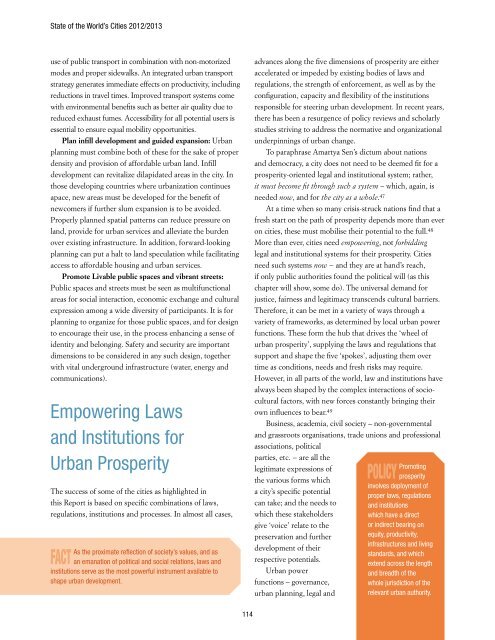

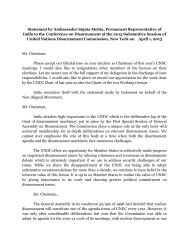
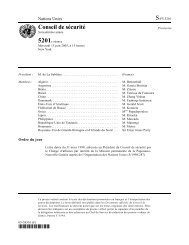
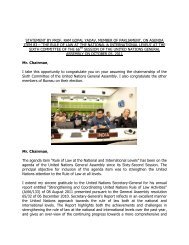
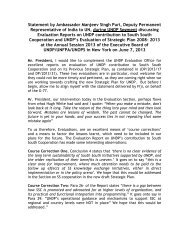
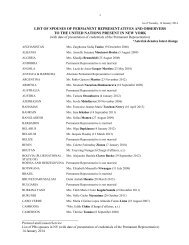
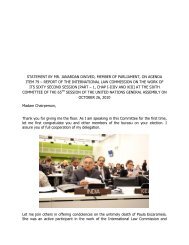
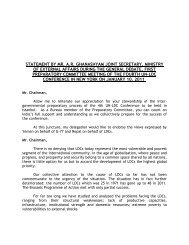
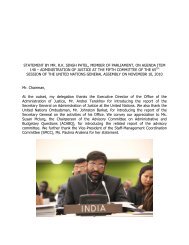

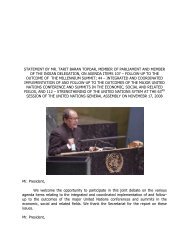
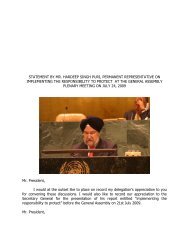
![1 statement by dr.[mrs] kakoli ghosh dastidar - Member States Portal](https://img.yumpu.com/27526598/1/190x245/1-statement-by-drmrs-kakoli-ghosh-dastidar-member-states-portal.jpg?quality=85)
